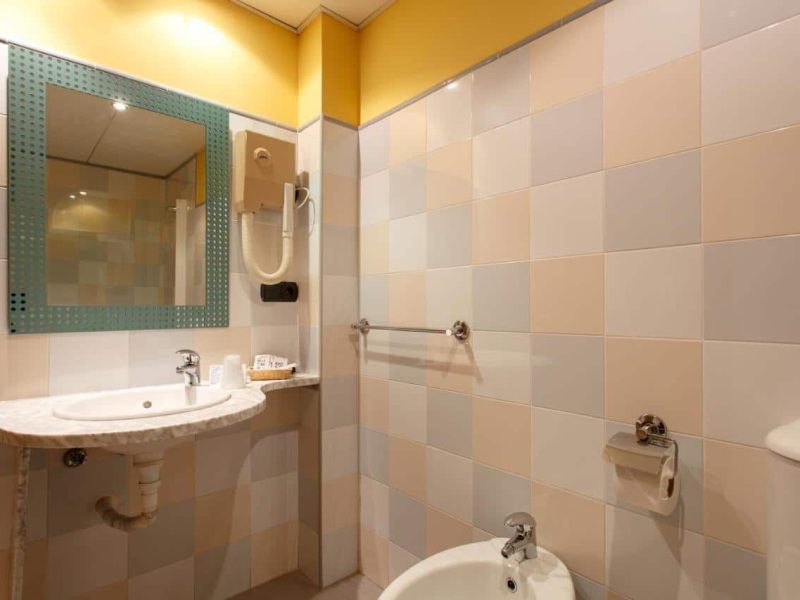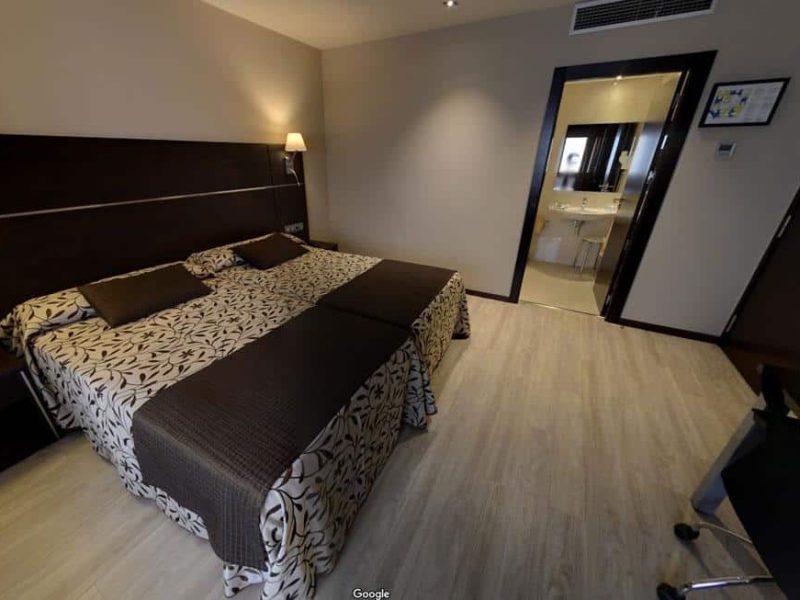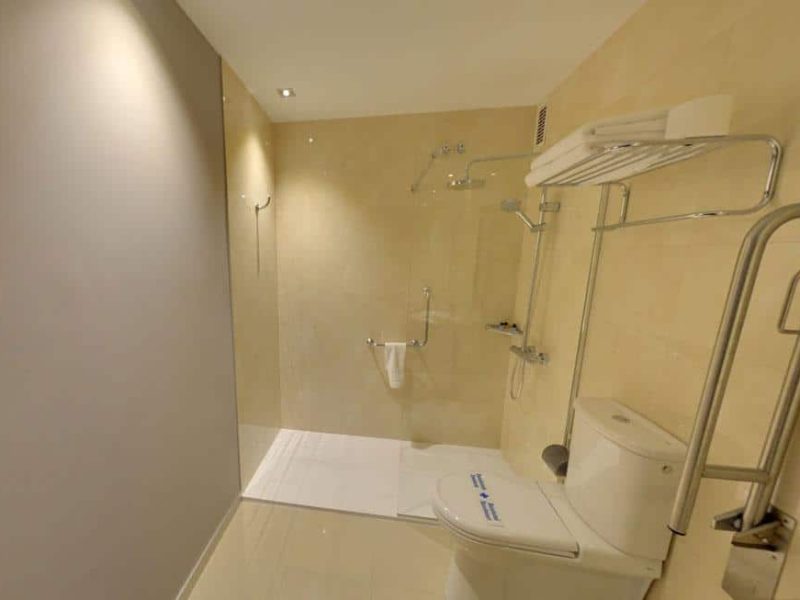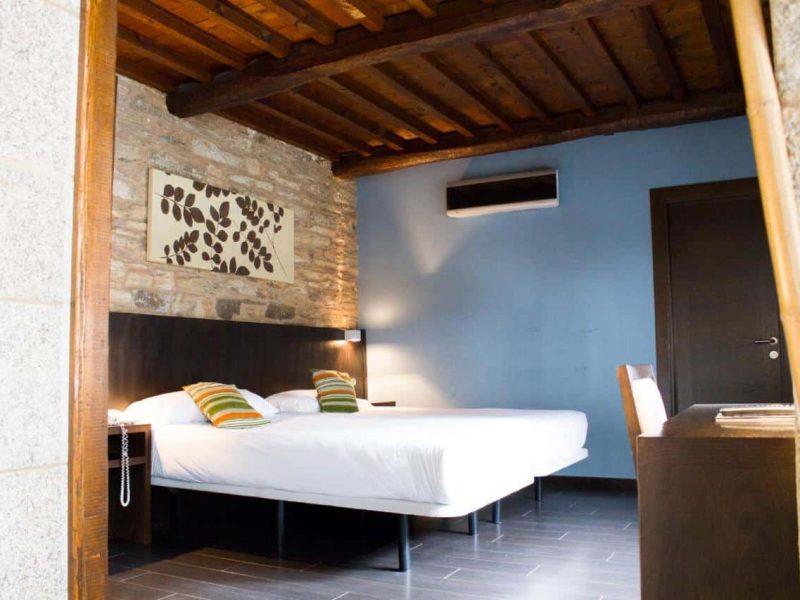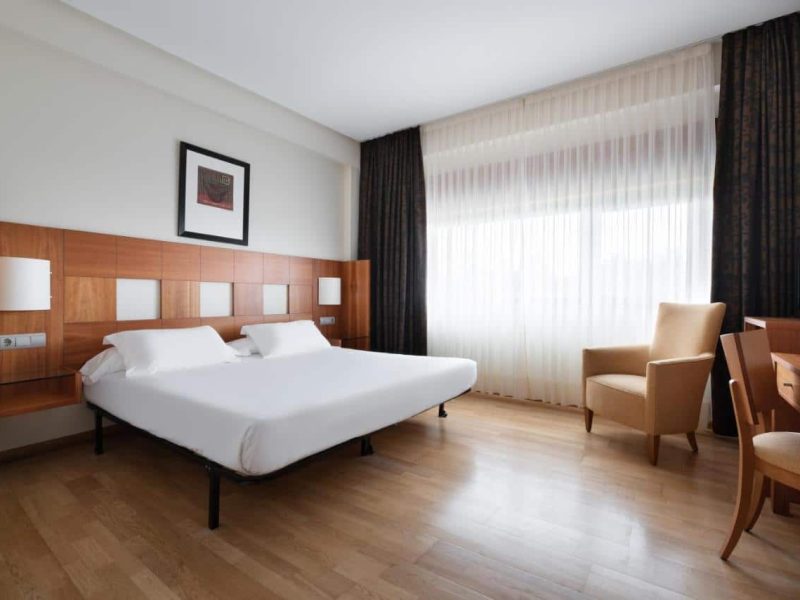Discover the Way from Orense to Santiago
A unique journey
Way
The route from Ourense (Way Sanabrés) along the Way of St. James passes through a predominantly rural environment with small, scattered villages and hamlets, except for the city of Ourense itself. This route is gaining more and more popularity and a warm welcome among pilgrims of all nationalities. Each year, they grow at a good pace.

More details
Origin
Orense

Destination
Santiago

Duration
7 days / 6 nights / 5 stages

Total Kms
104,9

Price / person
570€
Book now!
Indicates the number of persons

services
Services
Full and customizable services for a worry-free experience on the Wey of Santiago.
Services Included
Accommodations in Hotels, Rural Houses, Hostels
Rooms with private bathroom.
Special breakfast
Travel assistance insurance in Spain
Informative digital dossier on the way
Emergency roadside assistance vehicle
On-Route Telephone Assistance
Luggage transfer on the stages
✓ 1 suitcase per person, maximum 20Kgs
Special gifts, including the Pilgrim's Credential, the Pilgrim's Shell, and a Typical Galician Product.
IVA
Optional Services
Single room supplement
✓ Consult
Dinner supplement
✓ Consult
Extra night in Santiago
✓ Consult Rate.
1 day excursions (Bus)
✓ Finisterre (Costa da morte) and/or Rias Baixas.
Additional baggage
✓ Check rate if you bring more than 1 suitcase per person
Cancellation Insurance
Remember that the cost of the optional services chosen will be added to the base price of your route. We are committed to making your pilgrimage an unforgettable and carefree experience. Welcome to the Wey!
Stages
Discover the Wey of Santiago towards the majestic Santiago de Compostela.
Day 1: Arrival in Ourense. Lodging.
Welcome to the beginning of your journey. Get ready for an unforgettable adventure!
Day 2: Stage from Ourense to Cea (22.3 kms)
- Duration: 5h 30m
- Difficulty: Low
Breakfast and start of our first stage of the Way of Saint James from Orense, crossing the spectacular Roman bridge over the Miño River, followed by a steep ascent to reach the town of Sartedigos.
The stage will alternate between dirt tracks and asphalt, along with numerous corridors and centuries-old chestnut and oak forests. This is a predominantly rural area, dotted with small parishes and villages like Cudeiro, Sartedigos, Tamallancos, Bouzas, Sobreira, Faramontaos, Viduedo, Pazos, Casanovas, before finishing in Cea.
In this stage, the main point of interest is the Ponte Sobreira, a beautiful medieval bridge over the Barbantiño river.
Arrival in Cea: End of stage. Lodging
Note: If in the following stage we have decided to follow the official Way and not take the variant that passes by the Monastery of Oseira, we recommend visiting it during your stay in Cea, as it is the most important monument of the entire Way of Saint James from Orense.
Day 3: Stage from Cea to Lalín Station (27 Kms)
- Duration: 7h
- Difficulty: Medium
Breakfast and start of the stage.
From Cea, we have two options in our itinerary of the Way of Saint James from Orense: the Official route and the variant that passes by the Monastery of Oseira (4 kms longer). We leave the decision to each pilgrim. Both options converge in Castro Dozón, becoming a single Way until the Lalin Station.
A long stage with terrain marked by continuous slopes, but not too demanding. The terrain we are going to cover is very similar to that of the previous stage, as well as the type of localities, multitude of parishes and scattered villages that we will pass through (Cotelas – Piñor – O Reino – Castro Dozón – Puxallos – Pontenoufe – A Xesta), before ending the day’s stage.
Arrival at Lalín Station. Transfer to Lalín. Lodging.
Day 4: Stage from Lalín Station to Silleda (15 Kms)
- Duration: 4h
- Difficulty: Low
Breakfast and start of the stage.
A short stage that runs along dirt and paved tracks, through small villages, interspersed with some pine and eucalyptus tree areas.
The localities that the pilgrim will go through are: Botos – Donsion – A Laxe – Bendoro do A Baixo – A Ponte Taboada and Transfontao, to end in Silleda.
Arrival in Silleda. Lodging
Day 5: Stage from Silleda to Ponte Ulla (19.7 Kms)
- Duration: 4h 45m
- Difficulty: Low
Breakfast and start of the stage.
A comfortable stage that runs through small villages like Riocalvo, Bandeira, Dornelas, O Seixo, and San Miguel de Castro. We will go through green areas and farmlands, as well as some pine and eucalyptus areas and, as in previous stages, alternating dirt and asphalt tracks, until the end of the stage in Ponte Ulla or Santa Maria Madalena de Ponte Ulla, the first city of the province of A Coruña, belonging to the municipality of Vedra, which we access after a steep descent from San Miguel de Castro.
Arrival at Ponte Ulla. Lodging
Day 6: Stage from Ponte Ulla to Santiago de Compostela (20.9 Kms)
- Duration: 5h
- Difficulty: Low
Breakfast and start of the stage.
A stage with gentle slopes through an agricultural environment at the beginning, continuing with industrial areas and urbanizations as we approach Santiago, and dotted with numerous crossroads and roads. The entrance to Santiago is made through the Sar neighborhood, next to the fabulous Romanesque Collegiate Church of Santa Maria do Sar.
The stage begins with a steep climb to Outeiro, from which a splendid view is glimpsed. We continue to Lestedo, where, if you wish, you can deviate to Pico Sacro from which, according to the legend specified in the Codex Calixtinus, the oxen that transported the remains of the Apostle Santiago in a cart, to the mount Libredón, near Santiago, where they were deposited.
Arrival in Santiago de Compostela. Lodging.
Day 7: Breakfast - End of our services
We’re coming to the last day of your trip! Enjoy breakfast and conclude this unforgettable experience with us. Thank you for being part of this adventure!
This itinerary will take you through the most popular stages, allowing you to experience the beauty and culture of the Wey of Santiago. Be sure to book accommodation in advance, as it can get crowded, especially in the high season.
Safe travels and buen Wey!
Lodging
In our constant effort to provide the best experience to our customers, we want to assure you that we are committed to your rest and comfort. The accommodations we offer have been carefully selected and provide private rooms with private bathrooms, along with all the necessary services to make the most of your stay. It is important to note that we will never put you up in hostels.
Since these accommodations have a limited capacity, we will provide you with the exact name once you confirm your reservation and we verify availability on the dates of your choice. Your satisfaction is our priority!

Frequently Asked Questions
What to eat and typical dishes on the Camino de Santiago from Orense to Santiago?
The Sanabrés Way is a variant of the Silver Route. It starts from Zamora and reaches Santiago de Compostela through this province and Ourense. Like all other organized trips to the Way of Saint James, here you can enjoy authentic local cuisine. Of course, this route is full of interesting gastronomic options, even if you are not a pilgrim.
In this guide, we will talk about the most typical dishes of the Sanabrés Way. We will also suggest where to eat on the Sanabrés Way, from Ourense to Santiago.
Typical dishes of the Sanabrés Way from Ourense to Santiago
Opting for the typical dishes of the region will always be the best option to know its history and culture. Is a way to blend in more with both the adventure of doing the Camino de Santiago and with the locals.
Among the typical dishes that you must try without fail are:
Pan de Cea
Native to San Cristóbal de Cea, in Galicia, from where it gets its name. This bread is made from sourdough, wheat flour, and salt. However, what makes it different is both the fermentation and baking time. In both cases, they are much longer than traditional methods.
They are baked in a wood-fired oven at a very slow fire with a single slash positioned perpendicular to the width of the bread. They have a thick crust, fluffy and dense crumb, and a quite intense flavor that will surprise you.
Galician Stew
Of course, in Spain, we love stews, we adore them, regardless of the season, we will always enjoy them. Moreover, each region has its own version.
The Galician stew, in particular, is one of the most well-known throughout the peninsula. It is a hearty and abundant dish, perfect for regaining strength after a long day of effort.
Here, turnip greens or cabbage (depending on the season) are mixed with traditional beans and potatoes, chicken, beef, pork, or even all of them, chorizo, and soup noodles. The latter are dispensable. To accompany it, bread will always be the most appropriate.
Pimientos de Arnoia
The peppers of Arnoia, with a protected designation of origin, have a conical shape, resembling a sort of bell. They are so important that, in fact, they have their own festival in their honor, the Arnoia Pepper Festival. This festival is celebrated on the first weekend of August.
Being so popular, there are many ways to prepare them. However, stuffed is the most common way you will see them. For this, rice and some meat, usually finely minced beef or pork, is used.
You can enjoy them at any time of the year, and at any hour. They are always a true delight.
Marrón Glacé
The name might not ring a bell, but this is one of the most traditional sweets in all of Galicia and even Spain. These are chestnuts that have been candied or glazed, extremely popular in Italy and France.
Their popularity significantly increased in 1980, making them one of the most consumed today. Of course, nowadays, they are easy to find in most food establishments in the region.
Although their preparation is laborious, it is not exactly difficult. They are made from chestnuts, sugar, and a lot of, but a lot of patience.
Where to eat on the Sanabrés Way from Orense?
Best places to eat on the Sanabrés Way from Orense to Santiago
The final stretch of the Way of St. James can be one of the most challenging, both due to exhaustion and the anxiety of wanting to arrive quickly. Of course, on the stretch from Orense to Santiago, apart from the breathtaking landscapes, you also have good dining options.
Here are some recommendations to make the most of your journey through the area:
Villa Verde Restaurant (Vedra – Outeiro)
Located in the beautiful town of Puente Ulla, where it seems time has stopped and there is no rush or much less routine. Villa Verde Restaurant is a place to enjoy the most delicious traditional gastronomy and they will offer you extremely dedicated service.
It is located at number 10 Figueiredo Street. It’s central, beautiful, and offers a wide menu. This establishment pays tribute to Galician culture, with fresh ingredients from nearby gardens and preparations that combine tradition with unique, signature touches.
Restaurant A Palleira (Ourense)
Once in Ourense, we recommend dining at A Palleira, especially if you enjoy good portions of meat. However, they have options for all types of dietary needs.
It is located on Avenida de Buenos Aires, with spacious and very cozy facilities, not to mention the good service provided by the staff. On their menu, you will find fish, seafood, meats, stews, portions, and of course, many desserts so that you can enjoy the complete experience.
Tavern Acevedo (Xunqueira)
A surprise halfway through, that’s how we could define Tavern Acevedo. This cozy and picturesque space stands out for its pleasant environment, quiet and where silence is always the protagonist.
The food, delicious, traditional, and above all abundant, is a true delight for these final stages of the Way of St. James. Here you will find the necessary strength to finish. Open every day and of course, its managers are extremely friendly, especially with pilgrims.
Meson O Cruce (Lalín)
Traditional Galician cuisine at its finest, passed down through the hands of the same family for three generations.
You can find it at number 10 Vilatuxe Street. They offer a menu that will leave you quite satisfied where you can choose from fish, seafood, stews, and all types of meats. The establishment has its own butcher shop, which ensures fresh and top-quality cuts.
But, in addition, to help a bit with the economy of the pilgrims, this establishment also offers a daily menu, which is abundant and always delicious.
Finally, but no less important, they also have their own wine cellar, so good wines are never lacking.
What to See and Do on the Sanabrés Way from Ourense (Travel Guide)
STAGE FROM OURENSE TO CEA
In Ourense, we can see its Cathedral as well as the Roman Bridge and As Burgas.
The 16th-century Church of Santa Maria, which preserves remnants of the old Romanesque temple, and the 18th-century Baroque Pazo.
Cea is famous for making one of the best breads in Spain. The town has 20 bread ovens, exporting to many cities in Spain. Located in the center of the Plaza Mayor is the Clock Tower, composed of bells and four clocks (one on each side), as well as four fountains at its base.
Upon leaving Cea, in the direction of Piñor, is the Chapel of La Saleta.
Monastery of Oseira: 8.5 kilometers from San Cristovo de Cea is the most important monument of the Sanabrés Way. The Santa Maria la Real de Oseira monastery, founded in the 12th century and belonging to the Cistercian Order, is known as the “Galician Escorial” for its grandeur.
It consists of three cloisters (the Knights’, the Regular or Medallions’, and the Pinnacles’),
Romanesque church, and a chapter house. In the refectory, you can visit the Lapidarium or Museo da
Pedra.
STAGE FROM CEA TO LALIN STATION
Lalín, the capital of Terra de Deza, is the largest municipality in the province of Pontevedra. It is famous for its stew, based on pork products. As a testament to its importance, the “Cocido Fair” is held every year from January 15th to February 14th, attracting thousands of people during those dates and considered a “National Tourist Interest Festival”. Besides these dates, this delicacy can be enjoyed throughout the year in the many restaurants in the city.
As the most representative places to visit, we highlight:
– Monument to O Porco: Monument dedicated to the Cocido Fair.
– Avant-garde building (Castro Tecnológico), which houses the Town Hall of Lalín, designed by architects Emilio Tuñón and Luis Mansilla.
– Municipal Museum of Lalín: Mainly dedicated to Don Ramón Aller Ulloa, who created the first astronomical observatory in Galicia in the 19th century, which is still in operation.
STAGE FROM LALIN STATION TO SILLEDA AND PONTE DE ULLA
Taboada Bridge, which crosses the Deza river and, near Silleda, the 18th-century Pazo de Transfontao, which includes a circular dovecote, granary, and chapel, owned by the Montenegro family.
Chapel of Santiaguiño: A small 18th-century hermitage located in San Pedro de Vilanova (Vedra), with a rectangular plan and a semicircular arch. It has a Baroque fountain outside, where we can see a representation of the Apostle Santiago and his disciples, and references to the Translatio, as, according to legend, his remains were transported through these places in a cart, pulled by oxen, to Mount Libredón.
STAGE FROM PONTE DE ULLA TO SANTIAGO
In Santiago de Compostela, we find the most important monument of our entire route, the Cathedral of Santiago, dedicated to the Apostle James. It was consecrated in 1128 and is a good example of a pilgrimage church. Romanesque in style, with later Renaissance and Baroque elements from the 18th century. It has a Romanesque Latin cross plan, with three naves divided by semicircular arches, tribune, transept, and ambulatory. Worth noting is the Portico of Glory by Master Mateo, the best example of Spanish Romanesque.
As a tradition, every pilgrim who wishes and is able to attends the 12 o’clock mass in the Cathedral. In it, with a bit of luck, one can witness the magnificent botafumeiro in action. Another tradition is to embrace the image of the Apostle James and visit his crypt. A must-visit is the museum, as well as a visit to the Cathedral’s rooftops.
The Monastery of San Martin Pinario, in front of Plaza de la Azabachería.
The façade of the Parador de los Reyes Católicos, in Plaza del Obradoiro, which was founded as a pilgrim’s hospital.
The entire old town is spectacular, transporting us to the medieval era without us realizing it. In it is located the Abastos Market of Santiago.
How to Get to Ourense
We indicate the different options on how to get to Ourense and start your journey on the Sanabrés Way:
Option 1: Personal car and park the vehicle in Ourense, near the accommodation where we host you.
Option 2: Bus
From Madrid to Ourense with the company Alsa
Option 3: Train (Renfe) Station.
Option 4: Airplane
The nearest airport to Ourense is the one in Vigo.
From here, there are three possibilities to get to Ourense:
– By bus and train, an option seen previously.
– Private transfer: pick up at Vigo airport and direct transfer to the accommodation in Ourense. Please ask us for the price of the service.
What is the most popular route of the Way of Saint James?
Although, as we’ve mentioned, the Sanabrés Way is gaining more and more popularity, especially with the arrival of the high-speed train to the town of Ourense, the quintessential route is the Way from Sarria to Santiago. The positive side of the Way from Ourense is its lower overcrowding.
Do you still have doubts about the Camino?
This video will give you a more detailed and visual look at what to expect on your adventure. Don’t miss it!





